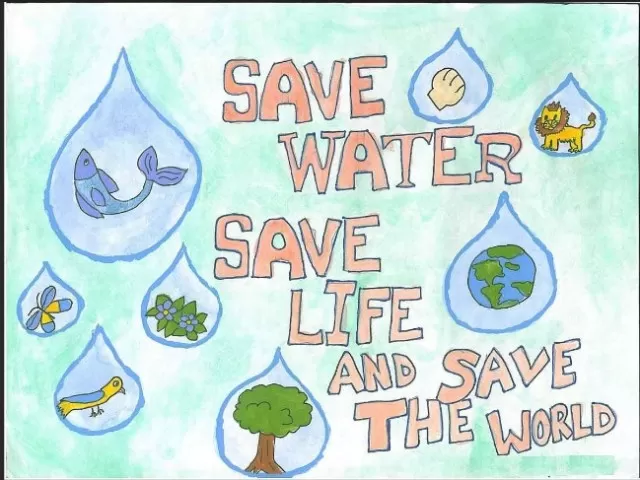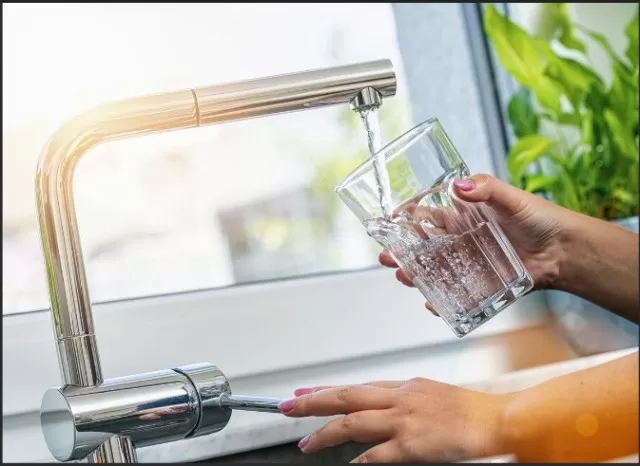Immediate Water-Saving Practices to Begin. A sobering reality confronts us: a staggering two billion individuals across the globe grapple with the harsh constraints of severe water scarcity. However, amid this pressing challenge, lies a glimmer of hope in the form of small yet impactful modifications that each of us can initiate.
These seemingly minor adjustments possess the potential to yield far-reaching consequences, not only in conserving our planet’s most precious resource but also in safeguarding the delicate balance of our environment as a whole. Through collective efforts to embrace these changes, we embark on a transformative journey toward a future where water scarcity is mitigated and the vitality of our planet is preserved for generations to come.
Contributing to Water Conservation

It’s essential to be mindful of water usage, as even seemingly minor leaks can lead to significant wastage.
Astonishingly, leaks alone can result in a squandering of approximately 180 gallons of water every week. To put this into perspective, that amount is equivalent to the water required for more than 300 rounds of laundry.
Moreover, the evolving climate patterns induced by climate change have brought about shifts in precipitation patterns. Consequently, regions that were already arid are now facing an increased risk of drought, while wetter areas are experiencing heightened levels of precipitation.
To gain insights into how your specific region is faring, you can refer to the information available on Drought. gov.
However, the good news is that each individual has the power to make a positive impact on water conservation.
By incorporating a few simple yet effective habits into your Daily Routine, you can significantly contribute to preserving this precious resource.
Understanding Your Water Usage
Ever wondered about the extent of your water consumption? Well, you don’t have to wonder anymore.
The Water Footprint Calculator is here to provide you with valuable insights into your current water usage patterns. This tool not only reveals the amount of water you’re utilizing but also offers valuable suggestions for curbing your consumption.
Additionally, a quick glance at your water bill can also shed light on your water usage.
It’s surprising to note that, on average, a typical American household consumes over 300 gallons of water each day within the confines of their own home. This figure underscores the importance of being conscious about our water habits and making a concerted effort to make more sustainable choices.
Collaborate with Your Urban Community

Reflecting on the drought that struck Western states in 2022, it becomes evident that the impact of water scarcity can necessitate stringent actions.
The U. S.
Bureau of Reclamation’s call for a 15 percent reduction in water consumption across seven states underscores the severity of the situation. However, rather than waiting for your city or state to impose urgent water-saving mandates such as rationing, there’s a proactive role you can play.
Engaging with the regulatory measures, educational initiatives, and incentive programs that your local area has established can make a substantial difference.
By complying with existing laws and regulations, staying informed through educational resources, and taking advantage of rebate programs, you contribute to alleviating the strain on water resources. Through collective efforts, we can safeguard our water supplies and ensure a more sustainable future for our communities.
Opt for a Bowl for Cleaning Fresh Produce
Transform your approach to cleaning fruits and vegetables by adopting a technique commonly employed in dishwashing: the use of two separate bowls—one for washing and the other for rinsing.
This simple modification carries multiple benefits, with water conservation and cost savings being at the forefront.
Instead of allowing water to flow continuously from the tap while rinsing your produce, containing the process within a bowl is far more efficient.
Not only does this practice save precious water, but it also keeps more money in your pocket. Interestingly, the effectiveness of this method doesn’t compromise the cleanliness of your fruits and vegetables; they’ll still be ready for consumption or cooking.
But the resourcefulness doesn’t stop there.
The water left over from rinsing can serve an additional purpose—nourishing your indoor or outdoor plants. By reusing the rinsing water for this green endeavor, you’re extending the utility of every drop.
Embracing these small yet impactful adjustments in your daily routine can significantly contribute to a more eco-conscious lifestyle.
Safeguard Your Home Against Leaks

The insights provided by the Environmental Protection Agency (EPA) are eye-opening: within the scope of an average household with leaks, an astounding 10,000 gallons of water go to waste annually.
To make matters even more concerning, as much as 10 percent of homes are plagued by leaks, resulting in a staggering 90 gallons of water squandered daily. It’s a clear call to action to address this issue promptly.
Leaky sources, such as toilets, faucets, showers, and outdoor hoses, are culprits that demand attention.
Taking measures to identify and fix leaks can have a substantial impact on conserving water resources. Should you require assistance in pinpointing leaks, the EPA offers a comprehensive list that can serve as a valuable guide in your endeavor.
By proactively addressing leaks in your home, you not only prevent the wastage of water but also contribute to a more sustainable and responsible water usage culture.
*The information is for reference only.